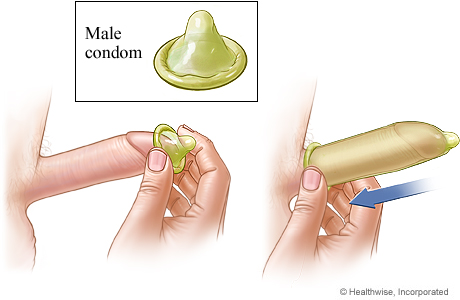

Barrier methods keep sperm from entering the uterus and reaching the egg. In general, barrier methods are less effective but have fewer side effects than hormonal methods or IUDs.
Barrier methods include condoms (male and female), diaphragms, cervical caps, and contraceptive sponges.
A male condom is a thin, flexible tube of latex rubber, polyurethane, or sheep intestine that has a closed end. The condom is placed over the erect penis before intercourse.
A female condom is a tube of soft plastic (polyurethane) with a closed end. Each end has a ring or rim. The ring at the closed end is inserted deep into the vagina over the cervix, like a diaphragm, to hold the tube in place. The ring at the open end remains outside the opening of the vagina.
A diaphragm is a round, dome-shaped device made of rubber or silicone with a firm, flexible rim. It fits inside the vagina and covers the cervix, the opening of the uterus. It should always be used with a sperm-killing jelly (spermicide). Diaphragms are not widely available in Canada. Buying the necessary spermicidal jelly to use with the diaphragm is difficult.
A cervical cap is made of rubber and shaped like a large thimble. It fits tightly over the cervix and is used with a spermicide. Cervical caps are not widely available in Canada. Buying the necessary spermicidal jelly to use with the cervical cap is difficult.
A contraceptive sponge contains a spermicide, nonoxynol-9, that is released over the 24 hours that the sponge may be left in the vagina. The sponge also blocks the cervix so sperm can't pass.
Current as of: April 30, 2024
Author: Ignite Healthwise, LLC Staff
Clinical Review Board
All Healthwise education is reviewed by a team that includes physicians, nurses, advanced practitioners, registered dieticians, and other healthcare professionals.
